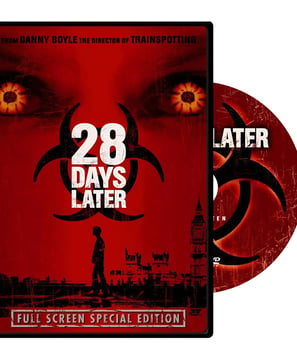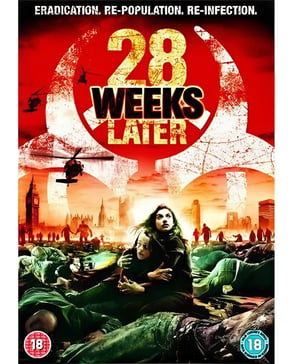Everything You Need to Know About the 28 Days Later Saga
12/16/20249 min read


The 28 Days Later series has truly become one of the most memorable franchises in contemporary horror, changing the way we think about apocalyptic scenarios and the zombie genre. With its captivating storytelling, eerie atmosphere, and memorable characters, this saga has transformed into a cultural phenomenon that keeps inspiring both filmmakers and fans. What began as a low-budget film rapidly became a pivotal moment for horror cinema, altering what people expect from the genre. In this post, we'll take a closer look at everything from the original film to the new releases on the horizon, exploring its themes, production, and impact on culture. Let's dive in!
28 Days Later
Released in 2002, 28 Days Later is a post-apocalyptic horror film directed by Danny Boyle, with a screenplay by Alex Garland. The story centers around Jim (played by Cillian Murphy), a bicycle courier who wakes up from a coma in an abandoned hospital, only to find that a viral outbreak has wiped out most of humanity. The infected aren’t your typical slow-moving zombies; they're fast, aggressive, and driven mad by a rage-filled virus. This fresh take on the zombie concept introduced a heightened sense of urgency and fear to the genre. If you want to check out the trailer for the movie, just click here.
Key Themes
Jim’s trek through a deserted London intensely portrays the fear of isolation, showcasing just how quickly our societal structures can fall apart. The film dives deep into our innate fears of being abandoned and disconnected, prompting viewers to reflect on how they might respond in such dire circumstances. Additionally, it explores the range of human reactions under extreme pressure, from moments of kindness to shocking brutality. This contrast between self-preserving instincts and acts of selflessness adds rich emotional layers to the narrative, shedding light on the complex moral dilemmas of survival in a world that’s falling apart.
Innovations
The film's employment of digital video cameras gave it a gritty, documentary-like vibe, which amplified both the tension and its sense of realism. The haunting imagery of a deserted London, captured through skillful early morning shoots, ranks among the most memorable in film history. Its stripped-back production demonstrated that a powerful atmosphere and compelling storytelling can triumph over budget constraints, paving the way for numerous indie and blockbuster films to follow.
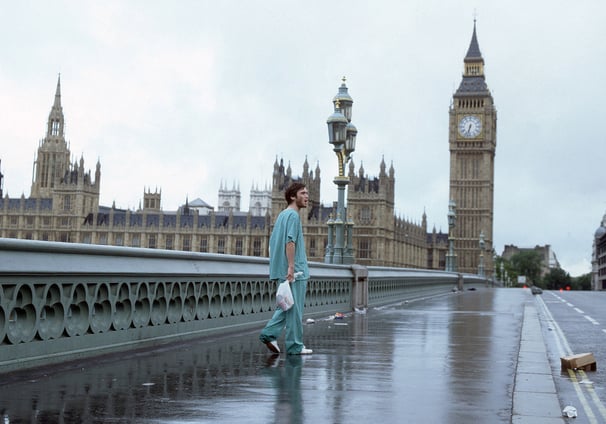

Cillian Murphy as Jim in a deserted London.
28 Weeks Later
The 2007 sequel, 28 Weeks Later, directed by Juan Carlos Fresnadillo, continues the story six months after the first film. With the infected seemingly wiped out, NATO forces set out to help repopulate London. But chaos breaks loose when the virus makes a comeback, highlighting how humanity’s overconfidence can often lead to its own ruin. The film broadens its focus significantly, moving from the close-knit struggles of a small group to a wider look at how society tries to rebuild. To see the trailer of the movie, click here.
Plot Highlights
In this installment, we meet Don (played by Robert Carlyle), who manages to survive the outbreak by leaving his wife behind. However, he ultimately becomes the reason the virus returns. His moral shortcomings add a personal touch to the larger disaster, emphasizing how individual choices can lead to dire consequences. A captivating subplot revolves around his children, Tammy and Andy, who possess genetic immunity that might just be humanity's ticket to survival. This raises significant ethical questions about genetic research and its potential impact on our future, weaving personal drama into larger societal issues.
Themes
At its heart, the film grapples with Don's guilt and his children's trust issues, which elevate it beyond a mere horror flick. It delves into how personal choices can have far-reaching effects on society as a whole. Moreover, the film critiques the ethical dilemmas associated with military intervention in crises, illustrating the devastating fallout that can arise when control is prioritized over compassion. This theme resonates with real-world discussions about leadership and crisis management, adding a layer of thought-provoking commentary to the narrative.
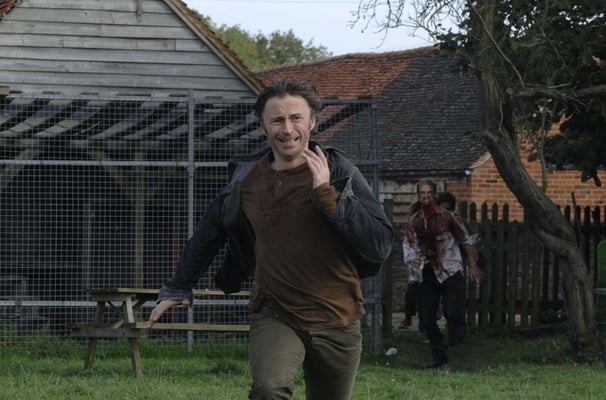

Robert Carlyle as Don trying to escape from zombies.
28 Years Later
Fast-forward to 2025: the story continues with 28 Years Later, directed by Danny Boyle and penned by Alex Garland. Set to hit theaters in June, this eagerly awaited chapter will dive into a world that's been transformed by decades of the Rage Virus. The lengthy gap between films reflects the time that has passed in the narrative, promising new perspectives and challenges. This latest installment aims to add depth to the franchise while honoring its origins. To check out the movie trailer, click here.
What We Know So Far
There are whispers that Jim (Cillian Murphy) may return, possibly stepping into a role as a leader or a figure of caution. His comeback could link the original film's storyline with the evolving plot, delving into the psychological wounds caused by enduring trauma. The focus might shift to a new generation facing the fallout of life in a fractured world. Expect themes of rebuilding society, navigating intergenerational trauma, and showcasing the resilience of the human spirit, making this both a deeply personal and broadly impactful tale.
Production Insights
Boyle and Garland's involvement ensures that the original vision continues to shine through. Early promotional materials suggest stunning visuals and a wide-ranging narrative that examines the balance between hope and despair in a world irrevocably changed. Fans are buzzing with excitement for its release, eager to see how the creative team balances character-driven moments with grand storytelling.
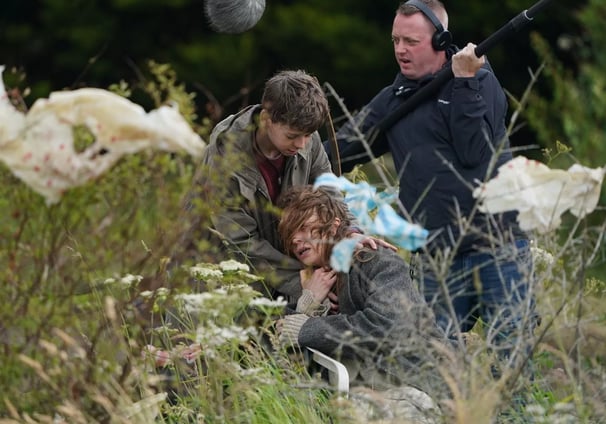

Jodie Comer and Alfie Williams shooting a scene for 28 Years Later.
28 Years Later Part II: The Bone Temple
Scheduled to hit theaters in 2026, The Bone Temple wraps up the saga. Directed by Nia DaCosta, with Garland and Boyle teaming up on the screenplay, this sequel is set to be an epic finale that ties together decades of storytelling. It aims to bring closure to the narrative while addressing some lingering questions from previous films.
Creative Direction
DaCosta offers a fresh take while remaining faithful to the saga’s roots. Her innovative vision is expected to enhance the franchise's aesthetic and thematic depth, providing a unique perspective on familiar concepts. The film's title hints at themes of decay, mortality, and what remains of civilization. It prompts us to question what rebuilding truly means and whether humanity can really learn from its past errors. The narrative is likely to delve into the spiritual and psychological impacts of survival.
Speculations
This installment could delve into the final resolution of the Rage Virus and humans' ultimate fate. Fans are eagerly awaiting emotional reunions, unexpected twists, and a storyline that offers both closure and reflection on society's fragility. With DaCosta leading the project, the film is set to push genre boundaries while delivering a fulfilling conclusion.
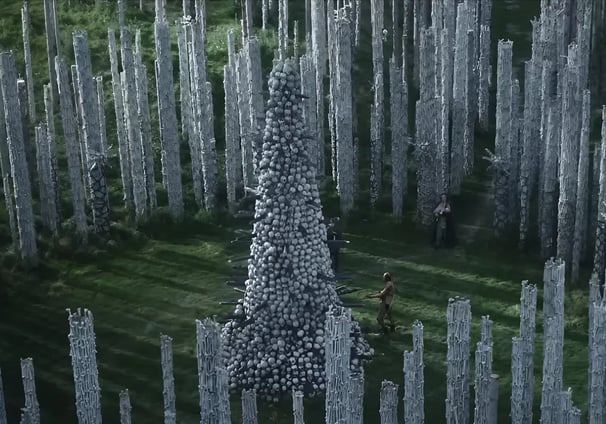

First look at The Bone Temple in the 28 Years Later trailer.
A Fresh Spin on Zombies
One of the most distinctive elements of the saga is how it portrays the infected. Unlike the typical undead zombies we're used to, these figures are actually living humans who have been completely consumed by uncontrollable rage due to a virus. This difference adds a layer of authenticity and psychological horror, making the infected much more chilling than your average zombie.
What Makes Them Terrifying
Their erratic movements and relentless chasing create a sense of urgency in every encounter, making them seem like an unstoppable force. This physical aspect heightens the feeling of immediate danger, cranking up the tension and keeping viewers on edge the whole time. Plus, the virus's roots in animal testing and how quickly it spreads hit a bit too close to home, linking the horror to real-world anxieties. This tie to modern issues gives the saga a timeless appeal that really strikes a chord with audiences.
Impact on the Genre
The infected have had a significant influence on later horror films, paving the way for faster and more menacing zombie depictions in movies like World War Z and Train to Busan. Their believable nature and fierce demeanor continue to raise the bar for contemporary horror, pushing filmmakers to think outside the box.

Don’t miss the chance to explore these films with a 30-Day Free Trial of Amazon Prime
Ready to be chilled to the bone? Many of these films are just a click away on Amazon Prime Video. Start your 30-day free trial and discover these spine-tingling masterpieces.
Behind-the-Scenes Insights
The Making of 28 Days Later
Choosing to film with digital cameras allowed for faster shooting in busy places like London, which helped create that eerie sense of emptiness that’s so central to the film’s look. This practical method really enhanced the film’s authenticity, pulling viewers right into its bleak landscape. The minimalist soundtracks composed by John Murphy, particularly the haunting piece “In the House – In a Heartbeat,” became closely tied with the film, amplifying both its emotional and suspenseful moments. The music’s raw simplicity perfectly emphasizes the film’s themes of isolation and hope.
Casting Choices
Cillian Murphy’s breakout role as Jim truly launched his career, blending vulnerability and strength in a way that really resonated. His careful performance stands out in the franchise, conveying the emotional depth and resilience needed to make it in a world turned upside down. Meanwhile, Naomi Harris as Selena brought even more richness to the story, presenting a strong female character whose journey struck a chord with audiences. Her role challenged typical genre stereotypes, providing a complex and empowering character that definitely makes her memorable in the horror genre.
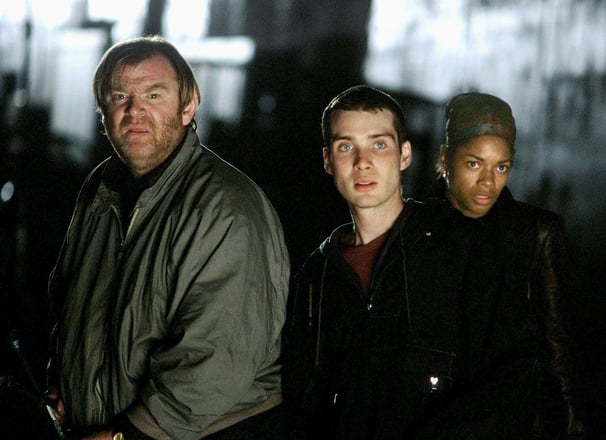

Brendan Gleeson, Cillian Murphy and Naomi Harris in 28 Days Later.
Cultural Impact and Legacy
The 28 Days Later series completely transformed the landscape of modern horror and apocalyptic storytelling, leaving a lasting mark on the film industry. Its fresh take on genre norms keeps influencing filmmakers and storytellers all over the globe.
Influence on Media
The 28 Days Later series sparked a surge of post-apocalyptic stories in TV shows like The Walking Dead and video games such as The Last of Us, solidifying its status as a key work in the genre. By focusing on human relationships amid chaos, it set a new standard for storytelling that combines emotional depth with real tension. The franchise also led the charge with the idea of fast-moving infected beings, changing how we view zombies from slow and clumsy to frighteningly quick. This shift really redefined the genre, garnering both critical praise and enthusiastic responses from audiences.
Societal Reflection
The series reflects real-life anxieties, touching on everything from pandemics to political turmoil, which makes it feel relevant and timeless. Its deep dive into humanity’s darkest tendencies strikes a chord in a world that's always facing challenges, presenting both a warning and a spark of hope.
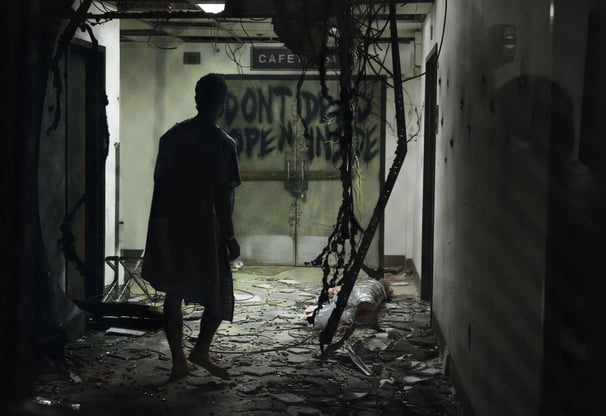

Andrew Lincoln as Rick leaving an abandoned hospital in season one of The Walking Dead.
How to Watch the 28 Days Later Saga
Unfortunately, you won’t find 28 Days Later streaming anywhere in the USA, but you can snag a physical DVD. Although it’s just a single disc, the 28 Days Later DVD packs in some cool extras, including the alternate ending that was shown a few months after the movie hit theaters.
On the bright side, 28 Weeks Later you can rent or buy digitally on Amazon Prime, and it's also available as a physical DVD.
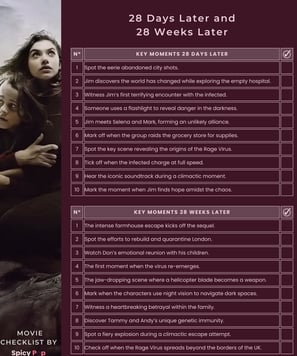

Don’t forget to download our exclusive PDF Movie Checklist for 28 Days Later and 28 Weeks Later! This free PDF includes two versions of the checklist in different colors, perfect for marking the key moments of both films as you watch. Download it here!
Movie Checklist
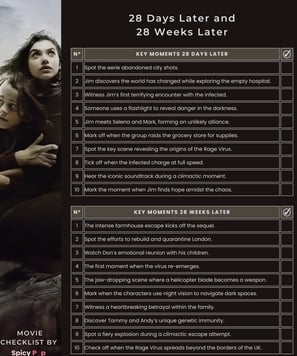

The 28 Days Later series has truly mesmerized audiences with its gripping storytelling, striking visuals, and deep themes. As we look forward to 28 Years Later and The Bone Temple, the franchise firmly holds its place as a defining gem in the genre. Whether you’ve been a fan for years or are just diving in, this saga is sure to haunt you, inspire you, and keep you on the edge of your seat for what’s coming next. So, are you up for a trip back to the world of 28 Days Later?
© 2024. All rights to the images are owned by their respective copyright holders.

